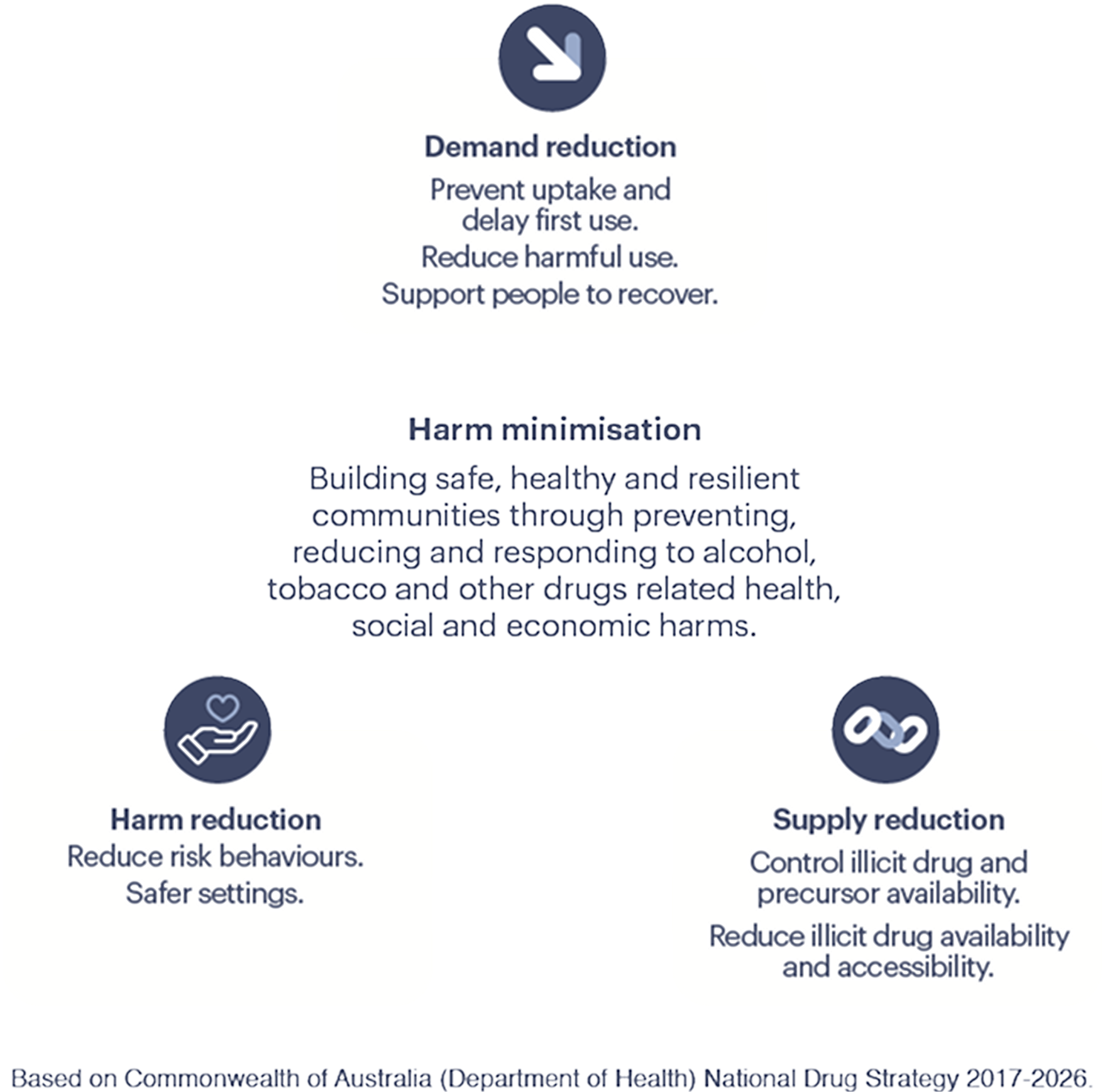For more information about opioid dependence and treatment options, call the
National Alcohol and Other Drug Hotline 1800 250 015.
References: 1. Gowing L, Ali R, Dunlop A, et al. National Guidelines for Medication-Assisted Treatment of Opioid Dependence [Internet]. Canberra, Australia; 2014 [cited 27 February 2025]. Available from: https://www.health.gov.au/resources/publications/national-guidelines-for-medication-assisted-treatment-of-opioid-dependence. 2. Australian Institute of Health and Welfare. Illicit drug use [Internet]. Canberra: Australian Institute of Health and Welfare, 2024 [cited 2025 Feb. 27]. Available from: https://www.aihw.gov.au/reports/illicit-use-of-drugs/illicit-drug-use. 3. Alcohol and Drug Foundation. Opioids [Internet]. Melbourne, Australia; 2025 [cited 27 February 2025]. Available from: https://adf.org.au/drug-facts/opioids/. 4. Kosten T and George T. The neurobiology of opioid dependence: implications for treatment, Science & Practice Perspectives. 2022;1(1):13–20, doi:https://doi.org/10.1151/spp021113. 5. Darke S. The life of the heroin user: Typical beginnings, trajectories and outcomes, Cambridge: Cambridge University Press, 2011. 6. Australian Institute of Health and Welfare. Alcohol, tobacco & other drugs in Australia: People in contact with the criminal justice system [Internet]. Canberra: Australian Institute of Health and Welfare, 2025 [cited 2025 Feb. 27]. Available from: https://www.aihw.gov.au/reports/alcohol/alcohol-tobacco-other-drugs-australia/contents/priority-populations/people-in-contact-with-the-criminal-justice-system. 7. Australian Institute of Health and Welfare. Alcohol, tobacco & other drugs in Australia: People experiencing homelessness [Internet]. Canberra: Australian Institute of Health and Welfare, 2025 [cited 2025 Feb. 27]. Available from: https://www.aihw.gov.au/reports/alcohol/alcohol-tobacco-other-drugs-australia/contents/priority-populations/people-experiencing-homelessness. 8. Australian Institute of Health and Welfare 2018. Opioid harm in Australia and comparisons between Australia and Canada. Cat. no. HSE 210. Canberra: AIHW. Available from: https://www.aihw.gov.au/getmedia/605a6cf8-6e53-488e-ac6e-925e9086df33/aihw-hse-210.pdf?v=20230605175040&inline=true. 9. Penington Institute (2024). Australia’s Annual Overdose Report 2024. Melbourne: Penington Institute. ISSN: 2652-7790 10. Australian Institute of Health and Welfare. Alcohol, tobacco & other drugs in Australia: Illicit opioids, including heroin [Internet]. Canberra: Australian Institute of Health and Welfare, 2025 [cited 2025 Feb. 27]. https://www.aihw.gov.au/reports/alcohol/alcohol-tobacco-other-drugs-australia/contents/drug-types/illicit-opioids-including-heroin. 11. Medicinewise News: High-risk prescription opioid use: 10 things you need to know. Sydney, Australia: National Prescribing Service; 18 November 2021 [cited 27 February 2025]. Available from: https://www.nps.org.au/news/high-risk-opioid-use-10-things-you-need-to-know. 12. Cheetham A, Picco L, Barnett A, Lubman DI, Nielsen S. Subst Abuse Rehabil. 2022;13:1-12. 13. Alcohol and Drug Foundation. Stigma – why words matter [Internet]. Melbourne, Australia; 2025 [cited 27 February 2025]. Available from: https://adf.org.au/insights/stigma-why-words-matter/. 14. Commonwealth of Australia Department of Health. National Drug Strategy 2017-2026 [Internet]. Canberra, Australia; 2017 [cited 27 February 2025]. Available from: https://www.health.gov.au/sites/default/files/national-drug-strategy-2017-2026.pdf


